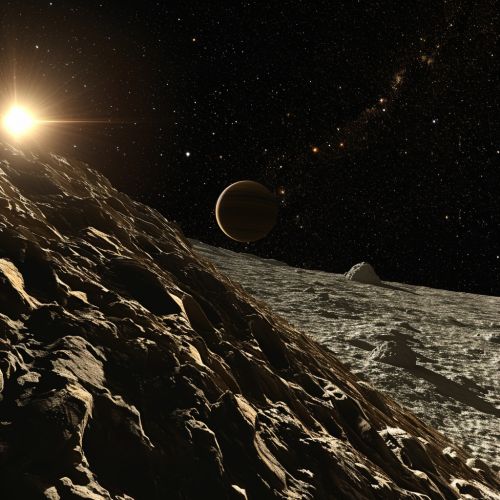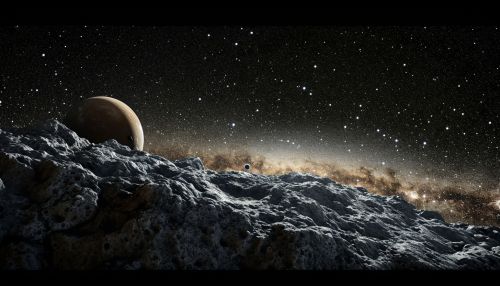Trojan (astronomy)
Overview
In the field of astronomy, a "Trojan" is a term used to describe a celestial body that shares an orbit with a larger planet or moon, but does not collide with it because it orbits around one of the two Lagrange points of stability (designated L4 and L5) which lie approximately 60 degrees ahead of and behind the larger body. The term "Trojan" was first used in 1906 for the asteroid Achilles, which was discovered to be in a stable orbit ahead of the planet Jupiter.


Discovery and Naming
The first Trojan, Achilles, was discovered by German astronomer Max Wolf in 1906. Since then, thousands of Trojans have been discovered orbiting in conjunction with various planets in our Solar System. The majority of Trojans share orbits with Jupiter, but Mars and Neptune also have known Trojans. In recent years, astronomers have even discovered a Trojan in Earth's orbit, known as 2010 TK7.
The term "Trojan" comes from the convention of naming these objects after figures from the Trojan War in Greek mythology. The L4 point, which lies 60 degrees ahead of the planet in its orbit, is associated with the Greek camp from the war, and the asteroids found at this point are named after Greek heroes. Conversely, the L5 point, 60 degrees behind the planet, is associated with the Trojan camp, and the asteroids found at this point are named after heroes from Troy.
Characteristics
Trojans are a type of asteroid, and like other asteroids, they are composed primarily of rock and metal. They range in size from less than a kilometer to several hundred kilometers in diameter. The largest known Trojan, 624 Hektor, is approximately 225 kilometers in diameter.
The orbits of Trojans are very stable due to the gravitational interactions between the planet they orbit, the Sun, and the Trojan itself. This stability is what allows Trojans to coexist in the same orbit as a planet without colliding with it.
Trojans and Planets
While the majority of known Trojans share an orbit with Jupiter, Trojans have been discovered in conjunction with other planets as well. Mars has at least seven known Trojans, the largest being 5261 Eureka. Neptune has also been found to have Trojans, and it is thought that many more remain undiscovered.
In 2011, the first Earth Trojan, 2010 TK7, was discovered. This asteroid is approximately 300 meters in diameter and resides in an orbit leading that of Earth. The discovery of an Earth Trojan was significant because it confirmed that stable orbits exist in the Earth-Sun L4 and L5 points.
Future Exploration
The study of Trojans is of great interest to astronomers and planetary scientists because they hold clues to the formation and evolution of the Solar System. NASA has planned a mission, named Lucy, to visit several Jupiter Trojans. The mission, set to launch in 2021, will study the Trojans' composition, structure, and the properties of their surface.
